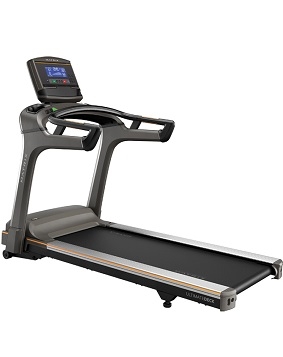1. Prepare for your run
As with all workouts, running and fitness preparations are essential. If you do not prepare, it is easy to cause sports injuries, such as muscle strains and joint sprains. These conditions are more common in the cold winter months. In addition, the heart cannot immediately adapt to high-intensity exercise, leading to panic. Dizziness and other physical discomfort. Warm up method is not complicated, simply do some stretching exercises, let the muscles adapt; Walk for another three or five minutes, let the heart and lungs adjust.
2. Speed up gradually
When running on the Kangle treadmill, gradually increase the speed of the treadmill. When you first get on the treadmill, don't set the pace too fast. You can start at 3 km/h(km/h), if you can set the slope, you should also set "0" at the beginning of the slope when the speed increases to 5-6-6, which is roughly equivalent to walking speed, and then gradually increase the speed or slope km/h at this point, you may be in a brisk walking or jogging state, at this point the body has basically adapted, Speed or slope can be maintained or further increased as needed.
3. Monitor your running heart rate
How fast? Heart rate can be assessed by measurement. Many treadmills have a piece of metal on the armrest. When the left and right hands hold the left and right armrests, the runner records the number of heart beats. If your heart and lung function is better, your heart rate can reach 145-0.5× age or even older; If your heart and lung function is relatively poor, then your heart rate should be 125-0.4× age. At the same time, you should experience your own feelings. If you just feel like running when running is "a little tired" that's it. "Tired" means running too fast.

4. No more than 60 minutes
How long does it take to run? In fact, it varies from person to person. A common approach is to prepare for 5 minutes of activity at a slower pace, then run formally for 20 minutes at a faster pace, then relax at a slower pace. This will last about 30 minutes. Generally speaking, about 30 minutes of exercise can have better exercise results. Of course, if you have higher demands on yourself, run continuously for 45-60 minutes. For ordinary bodybuilders, it should not exceed 60 minutes each time, because too long a time can easily lead to excessive fatigue, and joint wear may also increase.
5. Land heel first
If you're making a lot of noise when you step on the treadmill belt while running, there's probably a problem with your running form. A common mistake is to land on the sole of your entire foot. This is bad for the ankles. Too much pressure on the knees can cause joint damage. The correct way is to land on the heel first, then roll the transition to the entire sole of the foot, and use the arch to provide adequate cushioning time for the lower limbs. At the same time, pay attention to the abdomen and chest, using the strength of the waist and abdomen to control the movement of the body.
6. Slow down when you finish fast
It is not appropriate to get off the treadmill immediately after running. When running, the body's blood is mainly concentrated in the lower extremities. Rhythmic muscle contractions help push blood from the lower extremities back into the heart. However, if you stop immediately after running and the squeezing effect suddenly disappears, the blood will not flow back to the heart well and the heart will not get enough blood out, which can lead to insufficient blood supply to the brain. In severe cases, symptoms of shock may occur. So at the end of your run, slow down and transition from running to walking to give your body time to adjust.